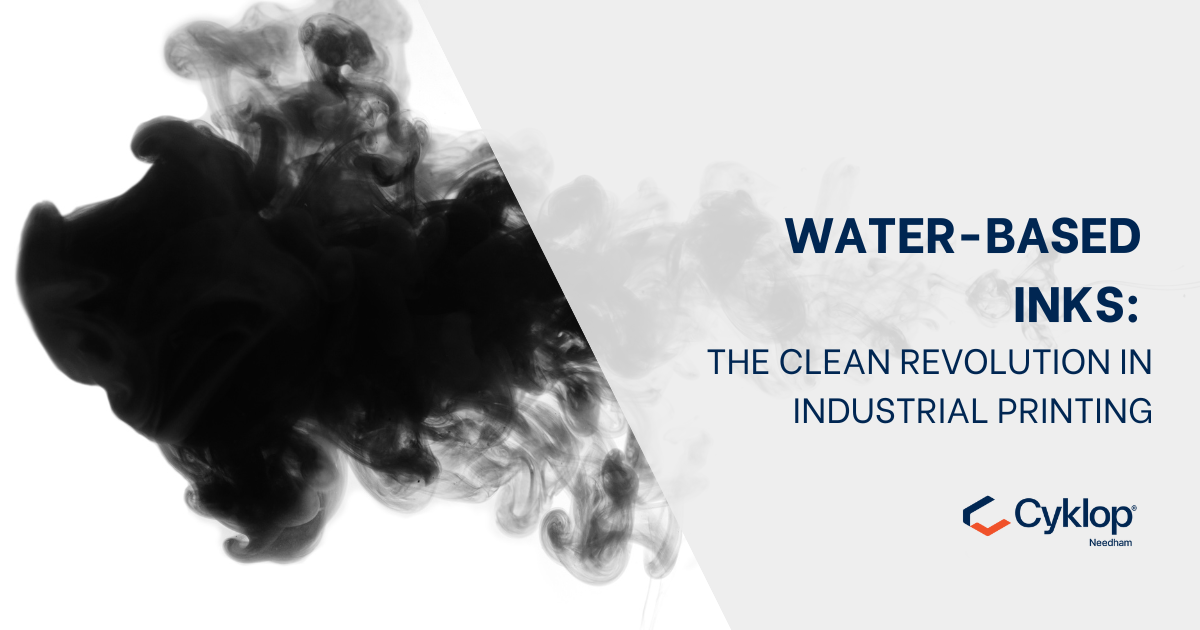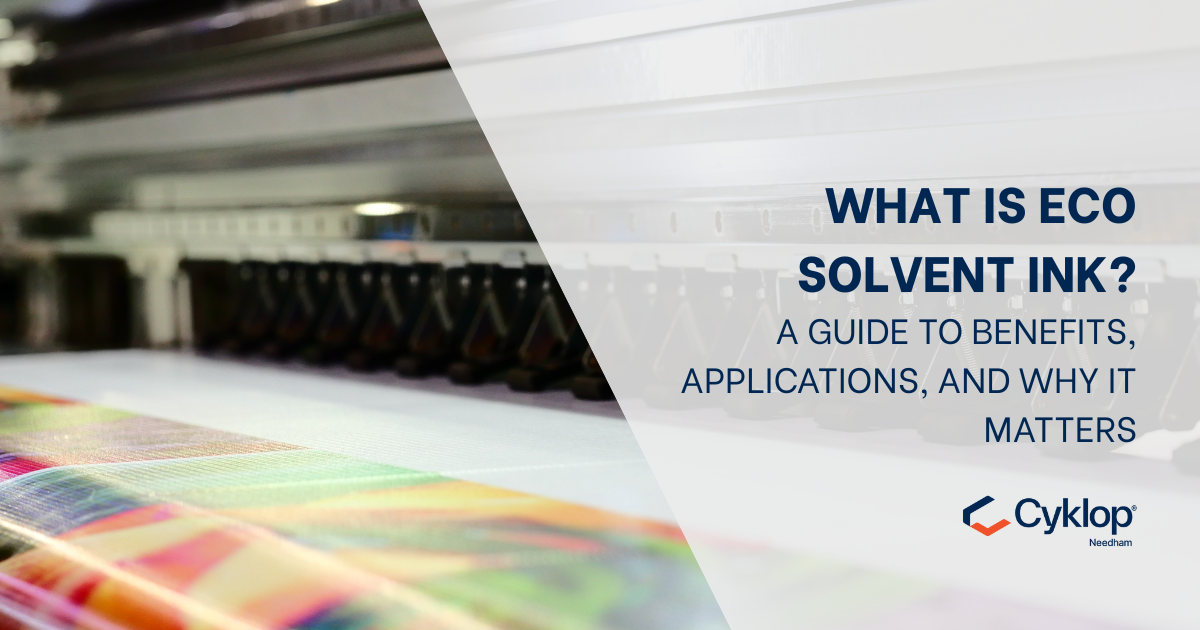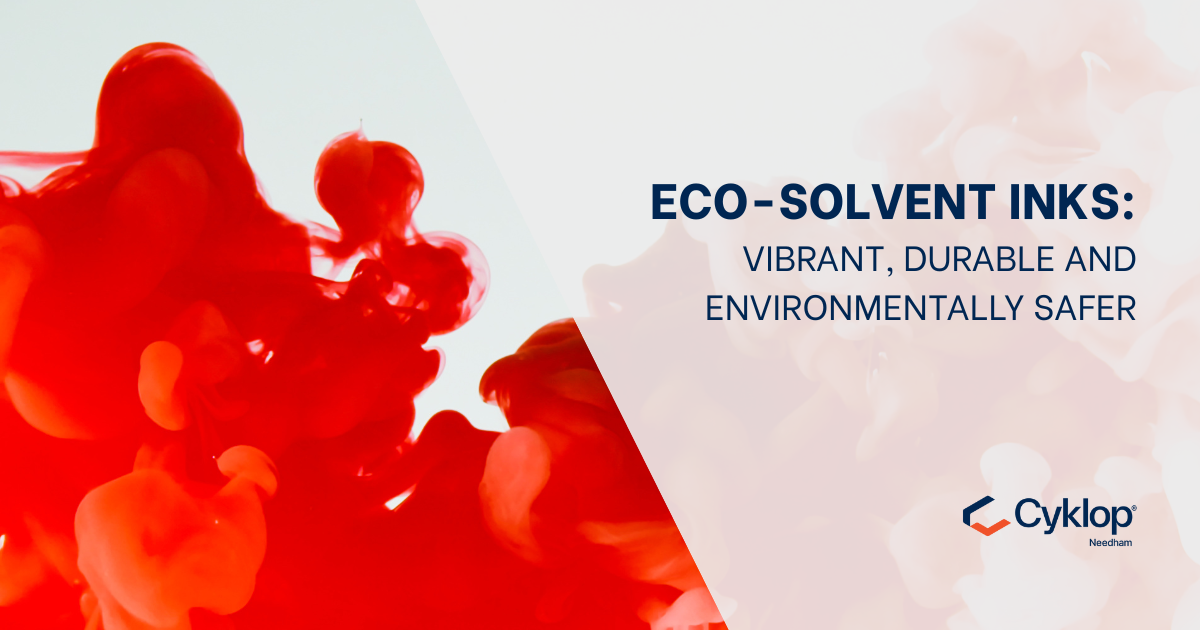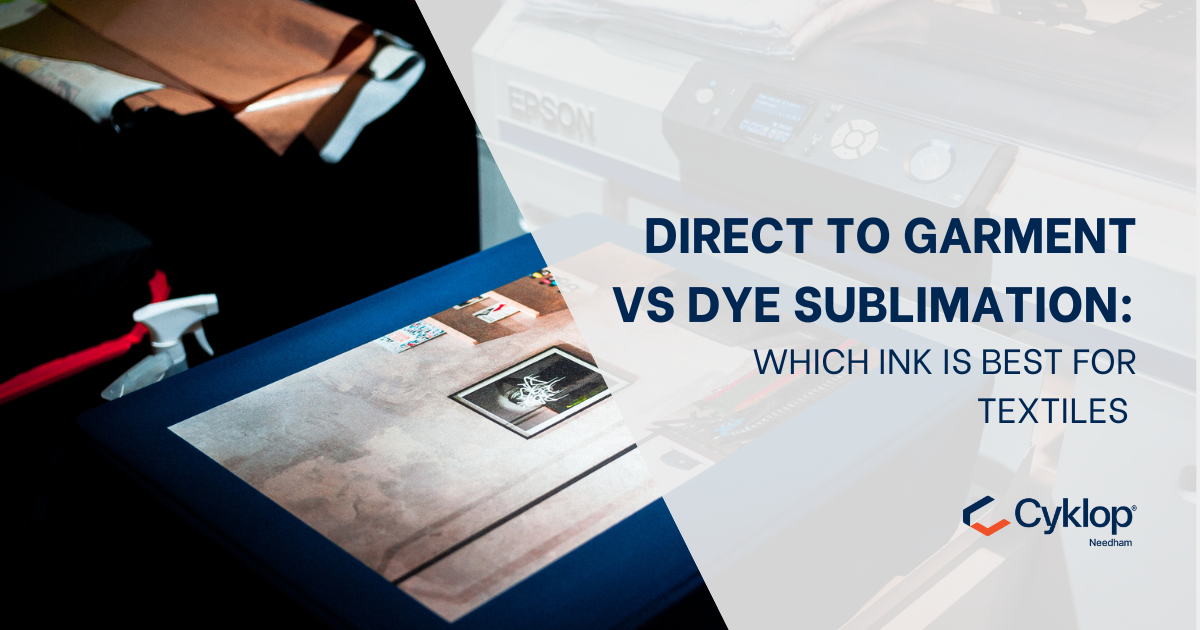What Is Eco-Solvent Ink? A Guide to Benefits, Applications, and Why It Matters
Eco-solvent ink has become a go-to solution in the world of large format printing, offering a low-odour, environmentally friendlier alternative to...
2 min read
Samuel Mcgarrigle
Sep 21, 2023 2:35:16 PM

As sustainability moves to the top of the agenda across industries, water-based digital inkjet inks are gaining traction — not just for their environmental benefits, but also for their cost-effectiveness and versatility across materials.
Whether you're printing food packaging, textiles, or corrugated board, water-based inks offer a cleaner, safer, and more sustainable approach to high-quality digital printing.
Water-based inks are inks that use water as the primary solvent to carry pigments (colours) onto the substrate. Unlike solvent-based or PVC-laden alternatives, these formulations replace harsh chemicals with a water/organic co-solvent base — making them safer to handle and more environmentally responsible.
They are particularly well-suited for primary and secondary packaging, especially in industries where contact with consumables, fabrics, or recyclables is a concern.
Water-based inks reduce chemical exposure for both operators and end-users. They are free from volatile organic compounds (VOCs) and are ideal for applications where low migration and food safety are a priority.
Using water and organic co-solvents significantly lowers material costs. With fewer hazardous compounds, waste disposal and handling are simplified — making them economically attractive for high-volume production.
When applied to textiles, water-based inks soak into the fabric fibres rather than sitting on the surface. The result? A “soft-hand” finish that feels natural — perfect for babywear, bedding, or apparel where softness matters.
These inks work exceptionally well on porous materials like paper, cardboard, and corrugated board. With the right pre-treatment, they can also print onto non-porous, flexible films, enabling consistent performance across various industries.
Water-based inks help brands reduce risk of contamination in food and pharma packaging. They also support recyclability, making them a preferred choice for eco-conscious packaging solutions.
Used in plastic films and high-density substrates, these inks offer strong adhesion and vibrant colours, while maintaining compliance for regulated markets like food and cosmetics.
With demand growing for low-emission products, wallpaper manufacturers are switching to water-based inks for both indoor air quality and on-demand design printing — eliminating the need to hold physical stock for years.
At Cyklop Needham, we’ve worked with global manufacturers and print specialists to integrate OEM-compatible, water-based inkjet inks that meet both performance and sustainability standards. Whether you're printing packaging, décor, or textiles, we offer:
Expert advice on substrate compatibility
Fast-drying, high-adhesion ink options
Support for CIJ and TIJ inkjet systems
Custom ink development for specialist needs
If you’re looking to reduce chemical exposure, improve sustainability, and enhance print quality — water-based inkjet inks are a smart move.
Call: +44 (0)1948 662629
Email: enquiries@needham-ink.com
Visit: www.needham-ink.com


Eco-solvent ink has become a go-to solution in the world of large format printing, offering a low-odour, environmentally friendlier alternative to...

Eco-solvent inks offer a powerful blend of vivid colour, durability, and lower environmental impact—making them the go-to choice for outdoor signage,...

Printing on Textiles with Wide Format Inks The demand for digitally printed textiles, fabrics, and garments continues to grow, especially in the ...